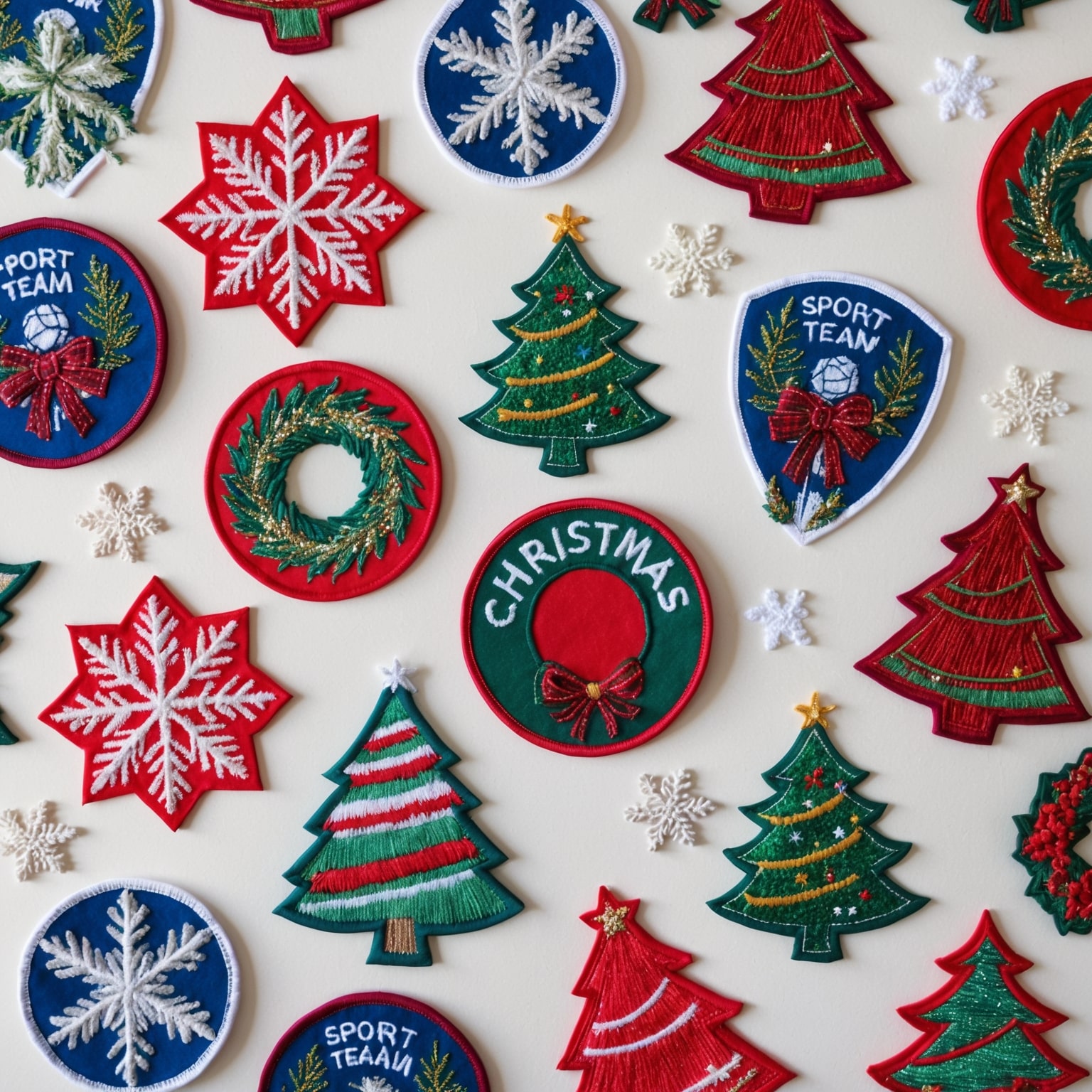Youth development programs are essential in helping young people build the skills, confidence, and values necessary to become successful and responsible adults. These programs, which range from scouting and sports teams to after-school clubs and leadership initiatives, provide valuable experiences that shape the future of participants. One of the most effective tools for recognizing and encouraging progress in these programs is the use of custom patches.
Custom patches serve as tangible symbols of achievement, milestones, and personal growth. They can motivate young participants, foster a sense of belonging, and reinforce the values that youth development programs aim to instill. This article explores how custom patches can enhance youth development programs, offering insights into their design, significance, and best practices for distribution.
1. The Role of Youth Development Programs
The Importance of Youth Development
Youth development programs play a critical role in guiding young people through some of the most formative years of their lives. These programs provide structured environments where participants can develop a wide range of skills, including leadership, teamwork, problem-solving, and communication. Additionally, they promote positive behaviors, build self-esteem, and help young people form strong connections with their peers and mentors.
Programs like scouting, 4-H, Boys and Girls Clubs, and sports teams are just a few examples of the many organizations dedicated to youth development. Each of these programs has its unique focus and goals, but they all share a common mission: to prepare young people for the challenges of adulthood.
The Power of Recognition in Youth Development
Recognition is a powerful motivator, especially for young people who are still developing their sense of self and identity. When young participants are recognized for their achievements, it boosts their confidence and encourages them to continue striving for excellence. This recognition can take many forms, from verbal praise and certificates to trophies and custom patches.
Custom patches, in particular, offer a unique and meaningful way to recognize the achievements of young people. Unlike other forms of recognition, patches are tangible items that can be displayed and worn with pride. They serve as constant reminders of the hard work, dedication, and progress that participants have made in their youth development programs.
2. The Significance of Custom Patches in Youth Development Programs
The Tradition of Custom Patches
The tradition of awarding patches to recognize achievements dates back to the early days of scouting, where patches were used to signify the completion of specific tasks or the mastery of particular skills. Over time, this tradition expanded to include a wide range of youth development programs, from sports teams to academic clubs.
Today, custom patches are used to recognize everything from participation in a program to the completion of significant milestones or the demonstration of leadership. These patches are often worn on uniforms, jackets, or backpacks, serving as badges of honor that young participants can proudly display.
Why Custom Patches Matter for Youth Development
Custom patches hold special significance in youth development programs because they serve as both motivators and symbols of achievement. For young participants, earning a patch is a tangible reward for their hard work and dedication. It provides a sense of accomplishment and reinforces the idea that their efforts are recognized and valued.
Additionally, custom patches help build a sense of community and belonging within youth development programs. When participants see their peers wearing patches that represent similar achievements, it fosters a sense of camaraderie and shared purpose. This sense of belonging is crucial for young people, as it helps them feel connected to their peers and the program.
The Emotional Impact of Custom Patches
Receiving a custom patch can be an emotional experience for young participants. The patch symbolizes not only their achievement but also the journey they took to reach it. It represents the challenges they overcame, the skills they developed, and the support they received from their peers and mentors. This emotional connection makes custom patches a powerful tool for reinforcing the positive impact of youth development programs.
3. Designing Custom Patches for Youth Development Programs
Creating meaningful custom patches for youth development programs requires careful consideration of the design elements that will resonate with young participants. From symbolism and color to shape and material, every aspect of the design should reflect the values, goals, and unique character of the program.
Choosing the Right Symbols and Imagery
Symbols and imagery play a crucial role in conveying the meaning behind a custom patch. For youth development programs, it’s important to choose symbols that are both age-appropriate and relevant to the participants’ experiences. Here are some common symbols and imagery that can be used in custom patches for youth development:
- Stars: Stars are a universal symbol of achievement and excellence. They can be used to represent the completion of milestones, the demonstration of leadership, or the mastery of specific skills.
- Animals: Animals are often used in youth development patches to represent specific qualities or characteristics. For example, a lion might symbolize courage, while an owl might represent wisdom. Animals can also be chosen to reflect the theme or focus of the program, such as wildlife conservation or animal care.
- Hands: Hands are a symbol of cooperation, teamwork, and service. They can be used to represent the collaborative efforts of participants or their contributions to community service projects.
- Tools and Equipment: For programs that focus on specific skills or trades, tools and equipment can be used as symbols on patches. For example, a hammer might represent carpentry, while a paintbrush could symbolize art.
- Nature Elements: Trees, mountains, rivers, and other elements of nature are often used in patches for outdoor-focused programs. These symbols can represent the connection between participants and the natural world, as well as the values of environmental stewardship and conservation.
- Logos and Mascots: Many youth development programs have their own logos or mascots, which can be incorporated into the design of custom patches. These symbols help reinforce the identity of the program and create a sense of unity among participants.
Selecting the Right Colors
Color is an important element of custom patch design, as it can convey emotions, signify achievements, and enhance visibility. When designing patches for youth development programs, consider using colors that are bright, vibrant, and appealing to young participants. Here are some considerations for using color in custom patches:
- Primary Colors: Primary colors (red, blue, yellow) are bold and eye-catching, making them a great choice for patches that need to stand out. These colors are also associated with energy, enthusiasm, and positivity.
- Green: Green is associated with nature, growth, and renewal. It’s a popular color for patches related to outdoor activities, environmental education, and sustainability.
- Gold and Yellow: Gold and yellow are often used to signify excellence, achievement, and leadership. These colors can be used to highlight special awards or to distinguish higher levels of accomplishment.
- Blue: Blue is associated with trust, reliability, and calmness. It’s a versatile color that can be used in a variety of patch designs, from academic programs to leadership initiatives.
- Purple: Purple is often associated with creativity, imagination, and wisdom. It can be used in patches related to arts, innovation, and intellectual pursuits.
- Black and White: Black and white are often used to create contrast and make other colors stand out. These neutral colors can also be used to convey simplicity, elegance, and timelessness.
Deciding on the Shape and Size
The shape and size of a custom patch can affect its visual impact and functionality. When designing patches for youth development programs, consider the following options:
- Round: Round patches are classic and versatile, offering a balanced design that can accommodate a variety of symbols and text. They are often used for general achievement patches or membership badges.
- Shield: Shield-shaped patches are popular for programs that emphasize leadership, protection, or service. This shape is often used for patches that represent specific roles or responsibilities within the program.
- Rectangle: Rectangular patches are practical and can accommodate more text, making them ideal for name tags, rank insignia, or patches that include detailed information.
- Custom Shapes: Custom-shaped patches can add a unique touch to the design and make the patch more memorable. For example, a patch could be shaped like a star, an animal, or an object related to the program’s theme.
The size of the patch should be appropriate for its placement on uniforms, jackets, or backpacks. Larger patches are more visible and can include more detail, while smaller patches are more discreet and can be used for specific roles or achievements.
Incorporating Text and Typography
Text is an essential element of custom patches, as it provides important information such as the name of the program, the participant’s role, and any special achievements. Here are some tips for incorporating text into custom patches for youth development programs:
- Font Choice: The font used in the patch should be legible and appropriate for the overall design. Consider using playful or creative fonts for patches aimed at younger participants, while more formal fonts may be suitable for leadership or academic programs.
- Placement: Text should be strategically placed to ensure it is easy to read and does not overwhelm the design. Common placements include along the top or bottom edge of the patch, in the center, or in a banner or ribbon across the patch.
- Content: The text on a custom patch typically includes the name of the program, the specific achievement or milestone being recognized, and any additional information such as the year or the participant’s name.
- Emphasis: Important text, such as the name of the program or the achievement, can be emphasized through the use of bold, larger font sizes, or contrasting colors.
Selecting Materials and Construction Methods
The material and construction of a custom patch are critical for ensuring durability, comfort, and functionality. Here are some common materials and construction methods used in custom patches:
- Embroidered Patches: Embroidered patches are created by stitching thread onto a fabric backing, resulting in a textured, raised design. They are durable and have a classic look, making them a popular choice for youth development programs.
- Woven Patches: Woven patches use thinner threads that are woven together to create a flat, smooth surface. This allows for more intricate designs and finer details, making them ideal for patches with small text or complex symbols.
- PVC Patches: PVC (polyvinyl chloride) patches are made from soft, flexible plastic and are highly durable and weather-resistant. These patches are ideal for outdoor programs or activities where the patch may be exposed to the elements.
- Heat-Transfer Patches: Heat-transfer patches are created by printing a design onto a fabric backing and then applying heat to bond the design to the fabric. These patches offer a smooth finish and can include photographic-quality images, but they may not be as durable as embroidered or PVC patches.
- Velcro Backing: Many custom patches are designed with Velcro backing, allowing them to be easily attached and removed from uniforms. This is particularly useful for patches that need to be swapped out frequently, such as rank insignia or special achievement badges.
4. Integrative Design Strategies for Youth Development Patches
Creating a successful custom patch for youth development programs requires more than just choosing the right symbols, colors, and materials. It involves integrating these elements into a cohesive design that effectively communicates the values and goals of the program. Here are some integrative design strategies to consider:
Creating a Visual Narrative
A well-designed patch should tell a story, representing the journey of the participant and the values of the program. Consider how the symbols, colors, and text can be combined to create a visual narrative that resonates with the participants. For example, a patch for a wilderness survival program might feature symbols of the natural environment, such as trees, mountains, and animals, along with text that emphasizes resilience and self-reliance.
Layering Elements for Depth
Layering design elements can add depth and visual interest to a custom patch. For example, the main symbol (such as a star or animal) could be placed in the foreground, with a background element (such as a landscape or abstract pattern) adding context and meaning. Layering can also be achieved through the use of different textures, such as combining embroidered elements with PVC details.
Using Borders and Edges to Frame the Design
Borders and edges can be used to frame the design and add structure to the patch. For example, a bold border can help define the shape of the patch and draw attention to the central symbols and text. Edges can also be customized with stitching patterns, such as merrowed edges, which provide a clean, finished look, or laser-cut edges for more intricate shapes.
Balancing Functionality and Aesthetics
While it’s important for a custom patch to be visually appealing, functionality should never be compromised. The patch should be durable enough to withstand the demands of the program, comfortable to wear, and easy to clean. Consider the conditions in which the patch will be worn—whether it’s exposed to the elements, subjected to frequent washing, or required to be highly visible in low-light situations. Balancing these functional requirements with the design’s aesthetics is key to creating a successful patch.
Encouraging Personalization
Personalization can make a custom patch even more meaningful to the participants. Consider including elements such as the participant’s name, rank, or years of participation. This can be done through embroidery, engraving, or heat-transfer methods. Personalized patches are especially valuable for recognizing individual achievements, such as completing a specialized training program or reaching a career milestone.
Reflecting Program Values
The design of a custom patch should reflect the values and mission of the youth development program. This can be achieved through the careful selection of symbols, colors, and text. For example, a program focused on community service might include symbols such as hands shaking or a heart, while a program focused on leadership might emphasize symbols of authority and responsibility.
5. Best Practices for Distributing and Presenting Custom Patches
Once the design process is complete, the next steps involve creating the patches and distributing them to participants. Here are some best practices for ensuring that the patches are well-received and effectively serve their purpose:
Partnering with a Reputable Manufacturer
Working with a reputable patch manufacturer is essential for ensuring high-quality results. Look for a manufacturer with experience in creating custom patches for youth development programs and a track record of delivering durable, well-crafted products. The manufacturer should offer a range of materials, finishes, and customization options to meet your specific needs.
Conducting a Pilot Run
Before ordering a large batch of patches, consider conducting a pilot run to test the design and materials. This allows you to evaluate the patch’s appearance, durability, and comfort before committing to a full order. A pilot run can also help identify any design adjustments that may be needed.
Ensuring Proper Placement and Attachment
Once the patches are created, it’s important to ensure they are properly attached to uniforms or other garments. Provide clear guidelines on where the patches should be placed, such as on the shoulder, chest, or sleeve. If the patches have Velcro backing, make sure the uniforms are equipped with the corresponding Velcro loop. For sewn-on patches, ensure that they are securely stitched to prevent them from coming loose during use.
Recognizing Achievements and Milestones
Custom patches are often used to recognize achievements and milestones in youth development programs. Consider holding a special ceremony or event to distribute these patches, allowing the participants to be publicly recognized for their accomplishments. This not only enhances the significance of the patch but also motivates other participants to strive for similar achievements.
Encouraging Patch Traditions
Patches can become an important part of a youth development program’s culture and traditions. Encourage participants to take pride in their patches and share the stories behind them. This could involve creating a “patch wall” where patches from different participants or events are displayed, or organizing patch exchange events where participants can trade patches with their peers.
6. Case Studies: Successful Use of Custom Patches in Youth Development Programs
To illustrate the impact of custom patches, here are a few case studies from youth development programs that have successfully used patches to recognize and motivate their participants:
Case Study 1: Scouting Program Rewards Skill Mastery with Custom Patches
A scouting program designed a series of custom patches to recognize the mastery of specific skills, such as wilderness survival, first aid, and navigation. Each patch featured a unique symbol representing the skill, along with the name of the skill and the scouting program’s logo. The patches were awarded during campfire ceremonies, where participants were publicly recognized for their achievements. The patches became a source of pride for the scouts, who wore them on their uniforms and shared stories of how they earned them.
Case Study 2: After-School Club Encourages Leadership with Personalized Patches
An after-school leadership club created personalized patches to recognize participants who took on leadership roles within the club. The patches featured the club’s mascot, along with the participant’s name and the role they held, such as “Team Leader” or “Project Coordinator.” The patches were presented at the end of each semester during a special awards ceremony. Participants proudly displayed their patches on their backpacks, and many returned to the club in subsequent semesters to earn additional leadership patches.
Case Study 3: Sports Team Celebrates Milestones with Custom Achievement Patches
A youth soccer team introduced custom achievement patches to recognize players who reached specific milestones, such as scoring their first goal, completing a season, or demonstrating sportsmanship. The patches were shaped like soccer balls and featured the team’s colors and logo. They were awarded by the coach during post-game celebrations, where the players’ accomplishments were highlighted. The patches motivated the players to set and achieve personal goals, and many of them collected multiple patches over the course of the season.
The Power of Custom Patches in Youth Development
Custom patches are powerful tools for recognizing and motivating young people in youth development programs. They serve as tangible symbols of achievement, progress, and belonging, reinforcing the positive impact of the programs and encouraging participants to continue striving for excellence.
By carefully designing custom patches that reflect the values and goals of the program, and by thoughtfully presenting these patches to participants, youth development programs can create lasting memories and foster a sense of pride and accomplishment in the next generation of leaders.
As you consider incorporating custom patches into your youth development program, remember that these patches are not just awards—they are symbols of the hard work, dedication, and personal growth that define the journey of each participant. With thoughtful design and careful presentation, your custom patches will become cherished mementos that young people carry with them as they continue to grow, learn, and achieve.
If you are interested in purchasing high-quality custom patches, feel free to call us at 1-877-503-8485 or fill out one of our FREE quotes here.




